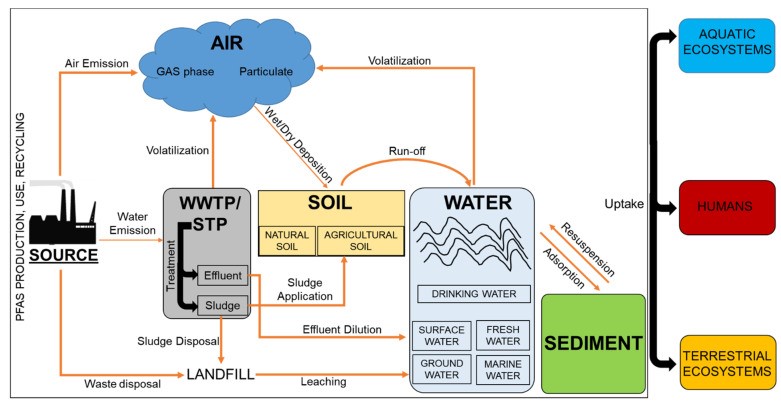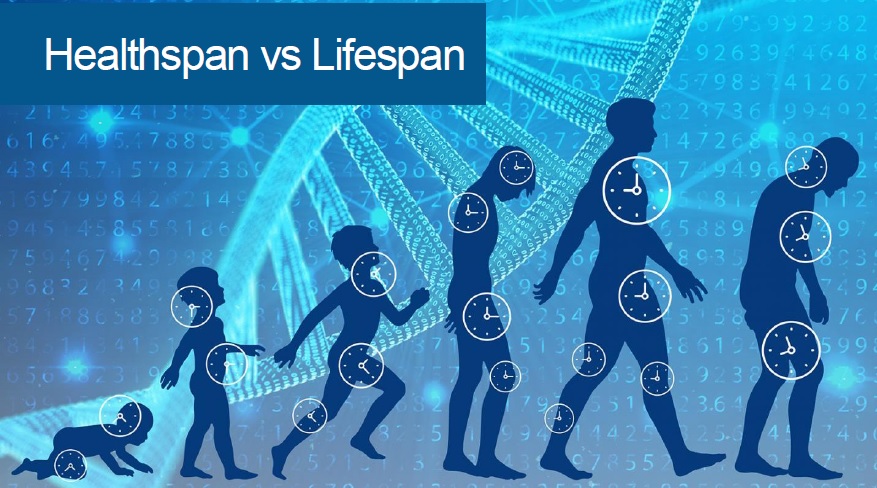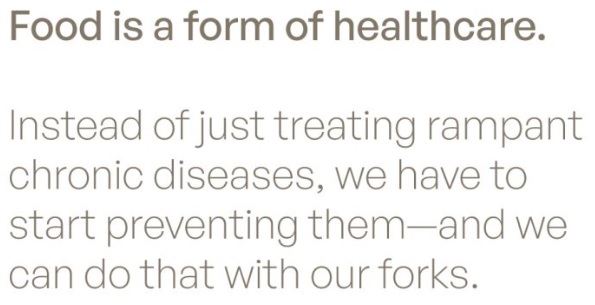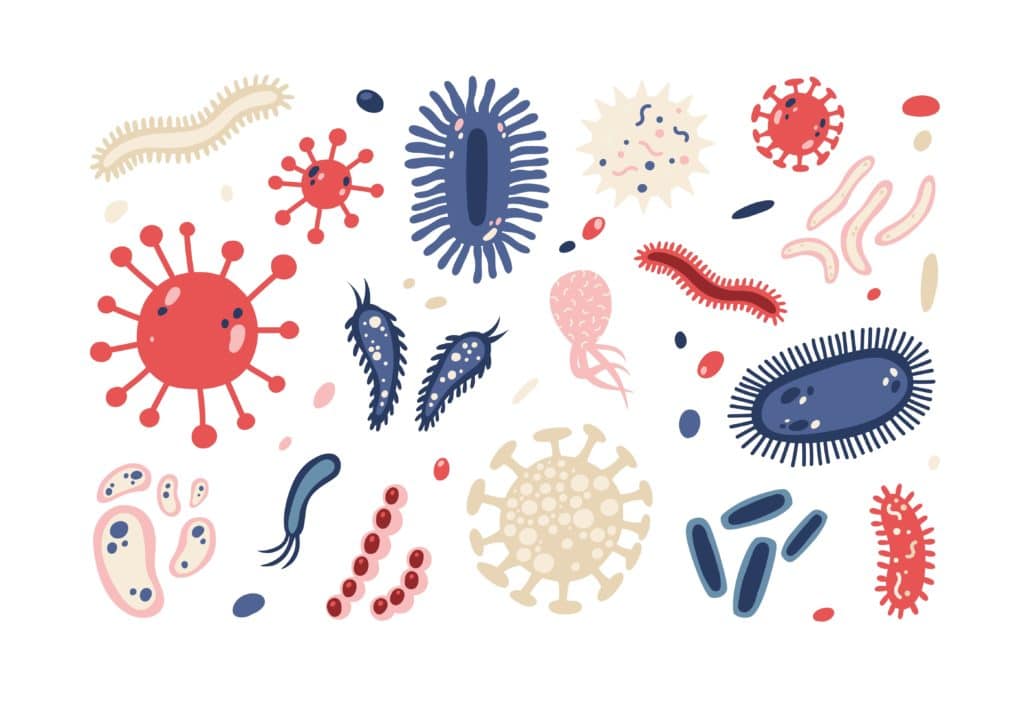The following information is based on research compiled by Dr Deanna Minich
Water is imperative to human survival, yet dehydration, or the disproportionate loss of fluids relative to what is ingested, is prevalent. One study estimated that only 40% of men and 60% of women across 13 countries met the adequate intake of water from fluids set by the European Food and Safety Agency.
However, water is involved in life-supporting enzymatic reactions and is an essential component of metabolism as it is consumed or produced in one third to one half of known enzymatic reactions. Water acts as functional medium for cells and carrier of nutrients and waste products throughout the body; is involved in thermoregulation and circulation; and aids in the lubrication of joints, digestion, and acid-base balance. Given its significance, water is the main component of the human body and makes up 55-65% of the body, with ⅔ of water being intracellular.
The importance of hydration has been reflected in recent research. In a cohort analysis of data on over 11,000 individuals (45-66 old) over 25 years of follow-up, researchers found that dehydration (defined in the study as serum sodium greater than 142 mmol/L) was associated with a 39% increased risk for chronic diseases, a 21% heightened risk of early mortality, and a 50% higher odds of being older than their chronological age. In other words, dehydration accelerates aging and diseases of aging.
The Biology of Hydration
Water balance is dependent on the difference between water input and output. While water input refers to consumed fluids, there are many avenues for water loss in the body. Besides water excretion through urine, water is lost through the stool, sweat, skin, and respiratory system. Dehydration may be increased due to exercise, medications, vomiting, diarrhea, burns, and health issues such as hyperthyroidism, chronic obstructive pulmonary disease (COPD), and hyperglycemia.
The body controls fluid balance through several mechanisms, with the primary control being via osmoreceptors in the brain and peripheral nervous system. Osmoreceptors detect changes in blood osmolality, and when there is a perceived state of imbalance, initiate a response that may trigger water consumption via the hypothalamus and water conservation in the kidneys. Water balance is maintained by the release of antidiuretic hormone, renin, angiotensin I, angiotensin II, and aldosterone.
No gold-standard test for dehydration exists. Serum and plasma osmolality tests are used as laboratory indicators of dehydration, along with tests for kidney function, like blood urea nitrogen (BUN). A Cochrane review published in 2015 concluded that no assessment or combination of assessments adequately identifies dehydration. Therefore, it’s challenging to diagnose dehydration in one’s everyday life using laboratory tests alone, which is why physical symptoms are also assessed.
Symptoms of dehydration include thirst; dizziness; light-headedness; headache; lack of focus; fatigue; dry skin, tongue, and lips; dark-coloured urine and decreased urination; muscle weakness and cramps; and rapid pulse and breathing. Older adults are at an increased risk of dehydration due to factors including decreased sensitivity to thirst and changes in kidney function that reduce the ability to reduce water loss.
To determine dehydration, particularly in athletes, new advances in hydration monitoring technology are becoming available. One such advancement includes electrodermal activity (EDA) sensors, which can estimate hydration status. Because the skin’s hydration status directly correlates with that of the body’s, and since water conducts electricity, the EDA will decrease when the body is dehydrated. However, the EDA is sensitive to emotions that evoke a sympathetic response including happiness and fear, in addition to environmental stimuli, such as humidity and temperature. Another advancement includes a wearable sweat chip and optical colour recognition software in a smartphone. The chip was used with long-distance runners to detect glucose concentration and pH in sweat, the latter of which can indicate the degree of dehydration in the body and help monitor electrolyte concentration. While the authors of the study noted several limitations, it is interesting to see new developments in hydration technology.
Contamination of Drinking Water
Despite the need for proper hydration, drinking water is often contaminated with toxins including inorganic toxicants, such as heavy metals, nitrates, and ammonia, and organic toxicants, such as polycyclic aromatic hydrocarbons (PAHs), polychlorinated biphenyls (PCBs), phenolic compounds (PCs), phthalate esters (PAEs), and pesticides.
Chemical wastes, automobile exhaust, medical devices, sewage water, inorganic fertilizers, and natural rock deposits of heavy metals and minerals all contribute to sources of inorganic water toxicants, which are typically non-degradable and thus remain for long periods of time in water and soil.
Arsenic is a heavy metal that contaminates drinking water through pesticides, natural mineral deposits, and inappropriate disposal of chemicals containing arsenic. Inorganic arsenic is considered a bladder carcinogen even at low-to-moderate exposure levels. A population-based control study in Maine, New Hampshire, and Vermont, where bladder cancer is 20% more prevalent compared to the rest of the United States, found an association between arsenic in drinking water and bladder cancer risk. The researchers reported this trend among participants who used private, shallow wells, which are more vulnerable to contamination. Folic acid supplementation in those who have low plasma folate may reduce arsenic toxicity by enhancing methylation via folate-dependent one-carbon metabolism and, ultimately, elimination of arsenic. It is important to ensure folate levels are properly assessed and that the correct form of folate is taken – please consult your naturopath and NEVER self-prescribe.
Environmental contamination of drinking water can have adverse effects on pregnancy. A recent study of pregnant women in California used data from birth certificates and hospital discharge records and merged it with the Environmental Protection Agency’s CalEnviroScreen 3.0 water quality data, which assesses the cumulative existence of pollutants and stressors, including contaminants in drinking water and groundwater. Results showed that hypertensive disorders in pregnancy were associated with exposure to contaminants in drinking water, including cadmium, lead, hexavalent chromium, and trihalomethane, produced when the chlorine used to disinfect tap water reacts with natural organic matter in water. Dermal absorption and inhalation of trihalomethane in tap water may be a larger contributor to exposure than consumption of tap water.
Other contaminants of concern are per- and polyfluoroalkyl substances (PFAS), which have a wide variety of uses in pesticides, firefighting foams, cosmetics, textiles coating, medical products, food processing, and more. Industrial and municipal waste-water treatment plants directly contribute PFAS release into freshwater systems, and PFAS can also be distributed to water via agricultural runoff and landfill leaching. These substances are ubiquitous, extremely persistent, mobile, and have the potential to bioaccumulate in the environment and food chain, hence their nickname of “forever chemicals.”
Drinking water is a main source of PFAS exposure, and even low levels of exposure can result in the bioaccumulation of PFAS in the body. According to autopsy tissues from individuals living in Spain, PFAS were found in all tissues, though lung tissues accumulated to the greatest extent. Studies have shown associations between PFAS exposure and health impacts including altered immune function, altered thyroid function, non-alcoholic fatty liver disease, increased cholesterol levels, adverse reproductive outcomes, kidney cancer, and testicular cancer. Additionally, a new study involving 55,032 adults living in Ronneby, Sweden found that long-term PFAS exposure through drinking water resulted in an increased risk of type 2 diabetes, and in particular, increased risk of early onset diabetes. In this study, individuals had been unknowingly drinking water contaminated by a nearby military airfield for decades. Researchers also found an increased risk of developmental language disorders in preschool children, particularly among girls, in Ronneby resulting from this same contamination incidence. This highlights the neurotoxic effect of PFAS and potential gender differences, as PFAS may disrupt hormone systems involved in brain development.

Figure 3. Schematic illustration of the PFAS environmental distribution and exposure routes for humans and biota. Image Credit: Panieri E, Baralic K, Djukic-Cosic D, Buha Djordjevic A, Saso L. PFAS Molecules: A Major Concern for the Human Health and the Environment. Toxics. 2022 Jan 18;10(2):44. doi: 10.3390/toxics10020044. PMID: 35202231; PMCID: PMC8878656. https://creativecommons.org/licenses/by/4.0/
The Environmental Protection Agency recently proposed the establishment of maximum contaminant levels for six PFAS in drinking water, which would be legally enforceable and require public water systems to monitor for PFAS and notify the public of PFAS levels.
Structured Water: A Trending Topic
Structured water is liquid water that gains structure through an increase in aggregated hydrogen and oxygen atoms, which form clusters of two to hundreds of water molecules that can have spherical, helical, and planar shapes. Notably, the shapes of structured water, which is a liquid, are different from the hexameric structure of ice. Most structured water research centres around the impact of magnetic fields on water.
Additionally, most research available on structured water is on animals. A 2020 study on thoroughbred race horses showed that using structured water for four weeks increased hydration, improved upper airway health after intensive training, and increased heart rate variability at rest compared to controls. In another study, female mice drank either pure structured water or tap water for two weeks before being bred with male mice. Upon examining the reproductive system of mice that had been pregnant, researchers found a significantly greater number of corpus lutea and an increase in the height of Fallopian tube epithelium in structured water mice compared to control mice. The possible cause of these positive effects on reproduction is speculated to be from the effects of magnetized water on oxidative stress and cell growth.
The scientific evidence on structured water and its benefits for humans appears limited. Nonetheless, a review of animal research appears to support the consumption of structured water and demonstrates the need for additional research on the mechanisms and safety for long term use. Some bench-top water filters include magnets around the tap which creates structured or activated water.
What to Drink: The Bottom Line
Hydration sources. Hydration comes in many forms besides plain drinking water, including tea, soups, broths, and food. Fruits and vegetables have varying amounts of water, with the highest quantities found in cantaloupe, watermelon, strawberries, lettuce, cabbage, spinach, celery, and cooked squash. Pasta, legumes, chicken, and cheese also contain water, though in lesser amounts. It is best to avoid or limit caffeinated drinks, including coffee and tea (herbal tea is fine) which can have a diuretic effect. People’s body’s metabolise caffeine differently, and while some research indicates that very low amounts of caffeine can support hydration, establishing exact levels can prove challenging. Further, caffeine and tannins (found in black teas) block nutrient absorption when consumed within an hour of meals.
Avoiding endocrine-disrupting chemicals. It’s best to avoid drinking water out of plastic containers because of the endocrine disrupting effects as plastic products leach chemicals. Stainless steel and glass are better choices for reusable water bottles.
Minerals and hydration. While water may seem straightforward, it has the potential to contain many minerals including calcium, magnesium, phosphorus, potassium, cobalt, chromium, and manganese. Minerals are important for hydration because several also function as electrolytes, which help maintain fluid balance in and around cells. Common water purification techniques, like reverse osmosis, demineralize water and may cause low mineral intake. A recent study examined the association between calcium and magnesium in drinking water and the risk of myocardial infarction and stroke in 26,733 Swedish women served by public drinking water. Researchers found that drinking water with high concentrations of calcium and magnesium was associated with a lower risk of stroke. The lowered risk seemed to be primarily associated with magnesium. Though the magnesium content of drinking water is low compared to what can be obtained via food, it is suggested that magnesium in drinking water has higher bioavailability compared to magnesium in food.
Sodium has received considerable attention as a risk factor for cardiovascular disease. However, sodium is essential for fluid and electrolyte balance and is the main solute in extracellular fluid. Sodium directs the flow of water, as water moves from areas of high to low solute concentration, helping to equalize osmotic extra- and intracellular concentrations. A sodium concentration less than 135 mmol/L results in hyponatremia and cell swelling, with the most significant effects occurring in the brain. However, even without brain edema, hyponatremia can have neurological consequences.
Some individuals may choose “hydration drinks” that include salt to optimize hydration, but many hydration drinks could be considered carbohydrate drinks considering their high sugar and low electrolyte content. Additionally, hydration drinks often contain sugar and food dyes, which are associated with carcinogenicity, genotoxicity, and hypersensitivity. A review of 25 clinical trials found that food dyes were associated with adverse neurobehavioral outcomes in children.
Most individual’s hydration needs will be satisfied by plain water and a diet containing sodium (salt) and other minerals. Minerals can be obtained via food and supplements or added to water by using a supersaturated salt solution known as sole. The Original Himalayan Crystal Salt® can be used to make sole and has been found to contain 84 trace minerals. Alternatively, water can be enhanced with a sugar-free electrolyte product of citrate minerals available through qualified naturopaths.
When to drink water. It’s important to remain hydrated throughout the entire day. However, some individuals wonder if drinking water at meals can dilute digestive secretions like stomach acid. While there is a lack of scientific evidence to support this point, it may be that excessive fluid intake during meals can hinder digestion, and, at the very least, reduce appetite. Further, drinking water upon waking, when a person is theoretically more likely to be dehydrated, may be a health-promoting practice as 40-50% of acute ischemic strokes occur in the morning and dehydration may be associated with stroke severity.
How much to drink. Water needs are complex to determine, especially considering needs can vary daily. A general rule of thumb is to drink “half your body weight in ounces.” Using this recommendation, a 150 pound person would need 75 ounces of water. Or in metric calculations, using the formula of consuming 40mls of water per kg body weight enables individualised needs. However, an individual may have different hydration needs depending on factors such as environment, exercise, and medication use. While a consensus on water needs is lacking, 2.7 litres and 3.7 litrrs (91 ounces and 125 ounces, respectively) per day for women and men, respectively, has been generally recommended by the National Academy of Medicine and is considered adequate. Of course, this amount would be subject to personalized needs on a daily basis.
Final Remarks
Hydration is an integral component of health and should be considered alongside nutrition for promoting optimal wellbeing. Here is a recap of what to keep in mind with hydration:
- Dehydration is associated with an increased risk of chronic disease and may advance the aging process. Older adults may experience a higher risk of dehydration.
- Drinking clean water is important to reduce exposure to harmful substances. Local tap water quality can be checked for contaminants via the EWG Tap Water Database. If using private wells, water should be tested for contaminants.
- Whenever possible, choose to drink water from glass or stainless-steel containers to reduce exposure to endocrine disrupting chemicals in plastic.
- Hydration can come from many sources, including water, food, teas, broths, and soups. Those drinking demineralized water may need to add minerals back into their diets.
- Sole therapy involves using a supersaturated salt solution diluted in purified water. The Original Himalayan Crystal Salt® has been found to contain 84 trace minerals and would be a source of salt to use as part of the sole.
- Sodium is important for fluid balance, and while excessive amounts of sodium may be linked to disease risk, it remains an essential mineral in the body. If desired, water can be enhanced a blend of citrate minerals which rebalance lost electrolytes.
- As a general recommendation, men and women should drink 3.7 litres and 2.7 litres per day, respectively. This amount needs to be personalized to an individual’s needs, which may vary day to day. It is health-promoting to drink water upon waking when the body is theoretically most dehydrated from an absence of intake for several hours.










